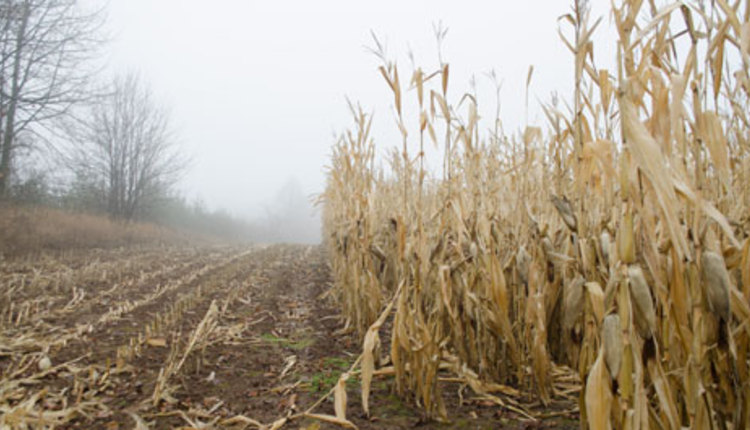
by Amanda Smith, Associate Editor
Make no bones about it; winter has arrived. The season's early onset, on the heels of a late growing season, has created its share of problems, as corn silage acres across the Midwest are left standing. For those planning to take the now frozen crop, inoculant use is highly suggested. Complicating the situation, however, the forage may not ferment until the mass thaws come spring. Chris Wacek-Driver with Vita Plus offered some tips on inoculant use and feed-out for producers who haven't put their equipment away for winter.
"As temperatures have dropped and harvest continues, inoculant tips and lines will freeze," noted Driver. Her suggestion: the addition of propylene glycol will help lower the inoculant's freezing point and can prevent lines and tips from freezing.
"Since the addition of propylene glycol has been born out of necessity, we are unclear about the exact amount to add to a tank of mixed inoculant," she continued. Start with a cup or two to approximately 10 gallons, and if the lines or tips continue to freeze, try adding more. Mix well; propylene glycol will not affect the inoculant's viability.
As the outside temperature and that of the incoming crop falls, the metabolism of the inoculant's bacteria will slow down causing the fermentation process to slow. While the inoculant bacteria can take fairly cold temperatures, once hydrated in solution, they cannot freeze or the bacteria will burst and die. Therefore, unused mixed inoculant solution (and the pumps) must be brought into a heated building when not in use.
To help with forage stability, Driver is a proponent of L. buchneri inoculants. "With late harvest years we usually have more challenges from the field microbiologically speaking - yeast, molds, disease and so forth. I tend to lean toward an inoculant promoting both upfront fermentation and an L. buchneri to promote stability at feed-out."
Crops and high-moisture corn put in at freezing temperatures often will not ferment until the mass gets back above freezing. If temperatures stay cool, this may not occur until the spring thaw, particularly in large forage piles or bunkers where there is a lot of mass.
"In well-packed forages with no exposure to oxygen this generally will occur as the temperature in the mass rises with environmental temperatures," added Driver. However, in forages that freeze solid, such as in the outer foot or so in piles, bunkers or bags, bacteria will lyse. Due to higher amounts of trapped oxygen in the mass, this section of the forage is susceptible to spoilage once warm weather commences.
"These high-risk areas may be the place to apply high amounts of a preservative such as propionic acid. If propionic acid is used, it will need to be mixed into the forage versus sprayed on for maximal efficacy," Driver concluded.
It is usually preferable to feed this forage prior to warm weather from a spoilage and stability standpoint. However, in high-moisture corn and corn silage until fermentation occurs, starch will be less ruminally available. Carefully monitor the soluble protein and ammonia-nitrogen content and adjust rations and expectations accordingly.








